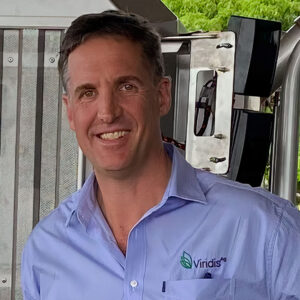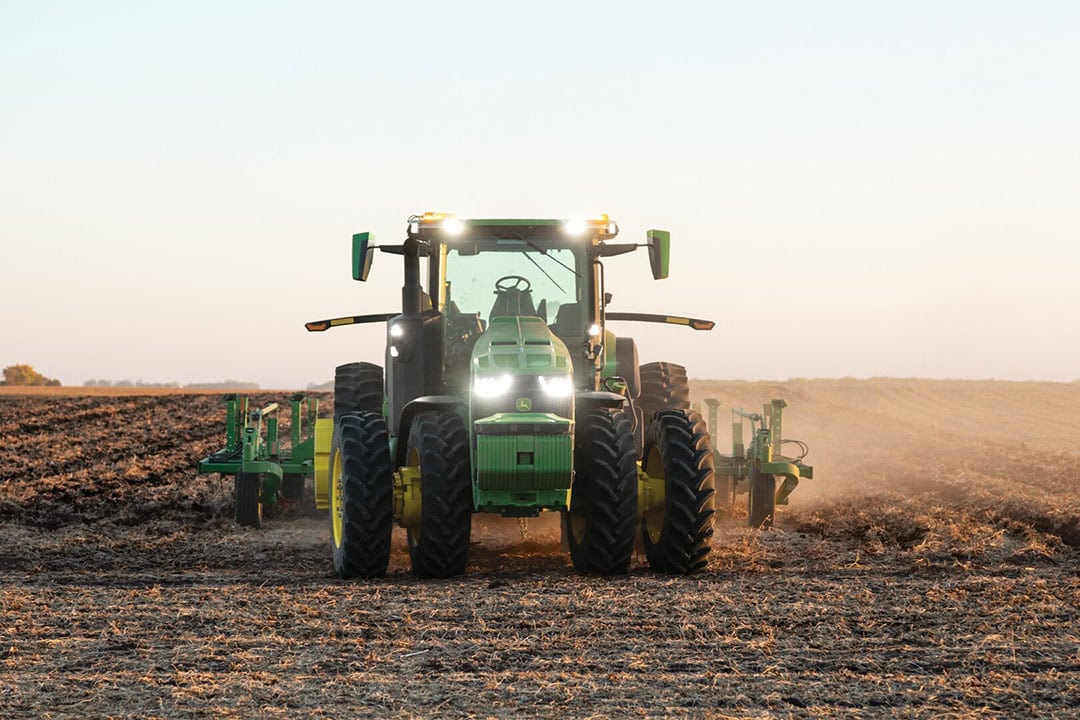The autonomous John Deere from a farmer’s perspective: Part III

What do farmers think of the autonomous John Deere? What impact will it have on their farm? Future Farming asks farmers around the world. This week: Andrew Slatter of Australian broad-acre farming company Viridis Ag.
CEO Andrew Slatter of Australian broad-acre farming company Viridis Ag expects autonomous tractors will better enable the expertise of the company’s highly skilled farm management teams. “We certainly see a place for this great technology alongside the great people on our farms”, he says.
Maximising soil health and productivity
Viridis Ag is a large-scale farming company with 12 properties across Australia. It has an environmental focus, adopting new technology and embracing best practice precision farming techniques to achieve environmental benefits by maximising soil health and productivity.
The company crops in excess of 95,000 hectares, with wheat, barley, canola and a range of legumes as the main crops. The rain-fed, broad-acre operations produce over 250,000 tons of grain per year. Viridis Ag works almost exclusively with John Deere tractors, self-propelled spray rigs and harvesters.
Mr Slatter thinks the introduction of the autonomous tractor is a ‘fantastic step’ for John Deere to take. “We really like their incremental approach. It’s a logical and scalable way to go forward with their platform. And we certainly would like to use more autonomous tractors in our farming system.”
A wide range of autonomous solutions

Viridis Ag has a highly skilled group of farming professionals that run their farms across Australia, Mr Slatter emphasises. “We carefully consider how advances in technology can help us deliver on our purpose: to grow better crops for a better future. If greater levels of automation are available, it will mean that our farm teams will get better leverage from our expertise in high value areas.”
Mr Slatter also appreciates the capabilities of autonomous field robots. Viridis Ag currently has two Australian SwarmFarm robots in its fleet. “It’s all part of the R&D program we are using to continuously improve our farming system”, he says. “We see a role for a wide range of autonomous solutions on our farms but have a lot of work to do on commercial integration.”
Also read: ‘Far less drama’ than expected with SwarmFarm robot
He points out that sustainability is essential to the company’s farming approach. “We’re always striving to safely, do more with less, with a focus on water use efficiency and implementing a farming system that can be carbon neutral by 2040. We know there is a very strong performance relationship between safety, technological readiness and the resilience required to cope with all of the variables that rain-fed agriculture can throw at you. We see investing in technology that enables our purpose is also a commitment to the growth of our people.”
John Deere 8R can only work with JD chisel plough
For now, the autonomous John Deere 8R tractor will be only be able to work with a JD chisel plough. “We know at the moment there’s only the tillage format”, said Mr Slatter. “But we use some forms of tillage, for example for wheel track renovation and maintenance deep ripping. In our controlled traffic system, we often need to go back in and repair the wheel track areas, especially after a wet year like 2021. That type of tillage could be an application.”
Text continues underneath image

A lot of hard work to do
But Mr Slatter underlines that there’s still a lot of hard work to do in Australian agriculture in order to be prepared for greater levels of autonomy. “We are really focussed on connectivity, especially on the more remote broadacre farms. It’s very poor at the moment”, he says.
“We think there’s a role for private enterprise and a broader industry approach in making sure there will be a strong connectivity backbone on farms. This is really critical. We struggle on our farms for the stable bandwidth to do a simple video conference. You can imagine how much more data intensive an autonomous farming system is going to be…”
This article is part of a series, in which we ask farmers from around the world what their expectations are of the autonomous John Deere tractor. Earlier, we asked Cassio de Oliveira Kossatz and Monique Martins Lima Silveira from Brazil. Read the article here.
We also talked to Saskatchewan farmer Kenton Possberg about the autonomous John Deere 8R. Read the article here.
Join 17,000+ subscribers
Subscribe to our newsletter to stay updated about all the need-to-know content in the agricultural sector, two times a week.



